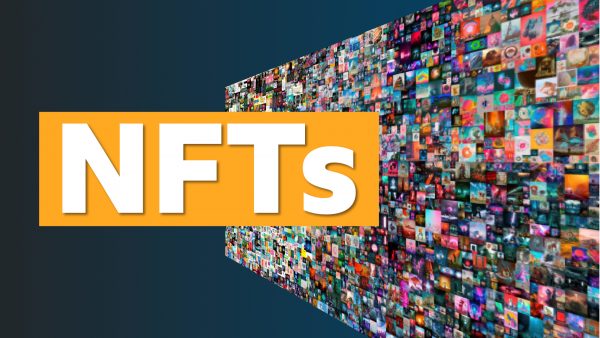What are NFTs?
NFTs is an acronym for Non-Fungible Tokens. NFTs can be anything digital such as pictures, drawings, memes, and even music. An NFT is created, or “minted” from digital objects that represent both tangible and intangible items, including Art, GIFs, Videos and sports highlights, Collectibles, Virtual avatars and video game skins, Designer sneakers, Music… Non-fungible tokens (NFTs) are cryptographic assets on a blockchain—like Ethereum Blockchain which hosts most NFTs—with unique identification codes and metadata(Data that describes other data, serving as an informative label) that differentiates them from each other.
Read more about Fintech
What does it mean for NFTs to be Non-Fungible?
NFTs cannot be traded or exchanged at equivalency. Is this surprising to you? Well, that’s why they are called Non-Fungible. Unlike cryptocurrency—which are fungible tokens—where you can trade a coin for its identical coin carrying the same value, when a copy of NFT is traded, you get a different copy entirely with a different value. NFTs cannot be copied because they are unique as each human fingerprint.
Why does a mere picture regarded as an NFT cost so much?
In my few conversations, I’ve heard friends ask questions like: “If anyone can view the individual or the entire images online for free, then why are people spending millions on something they could easily screenshot or download and even send to one another. Okay, here’s the answer. An NFT allows the buyer to own the original item; be it music, image, drawing… Not only does it do that, but it has built-in authentication, which serves as proof of ownership. The world truly is advancing. Instead of getting Da Vinci’s painting hanging on your wall, for instance, you now get it as a digital file. One digital file unique to you carries as much value as the hard copied Da Vinci’s paint would worth.
Sign up to the Connect Nigeria daily newsletter
The value of NFTs
The true value of NFTs lies in their ability to prove who created a piece of digital work and to track its history of ownership unlike in the past when digital assets were stolen and the artists were given no royalties or credit or compensation for their work. When an artist chooses to create their work and turn it into an NFT, they turn it into a digital collector’s item. They strive to create digital scarcity by sharing a limited edition of their piece, allowing their work to gain value. Even if someone comes across an artist’s NFTs on Bing or Yahoo or even Google search engine, they can only admire the digital asset privately but they won’t be able to sell it or claim ownership of it. It’s easy to identify a fake NFT because one NFT cannot be owned by two owners but one only. It can be shared however by the real owners to buyers willing to buy the NFT.
So NFTs have given digital artists the great opportunity to own their work in the digital space, control the amount in circulation and make huge profits from them without suffering any loss from copyright defaulters and pirates.
Featured Image Source: BBC
Got a suggestion? Contact us: [email protected]


